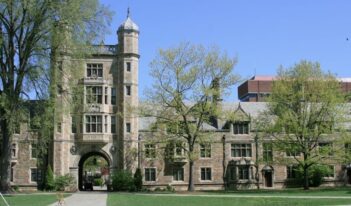
Medical bills may continue to take consumers by surprise despite the No Surprises Act.
Earlier this year President Joseph R. Biden remarked that “millions of hardworking Americans will no longer have to worry about unexpected medical bills.” He was referencing the federal No Surprises Act, which went into effect in 2022 and provides protections for consumers against unanticipated medical bills.
But whether President Biden’s claim will hold true is complicated by loopholes in the law and administrative rules, as well as a recent federal court decision and legal challenges.
People who live in the United States worry more about surprise medical bills than other health care and household costs. And in the past two years, one-third of insured adults reported receiving a surprise medical bill. To confront this systemic issue, the U.S. Congress enacted the No Surprises Act at the end of 2020 to address surprise medical bills and provide protections for patients.
The No Surprises Act attempts to eliminate unexpected medical bills by mandating that private health plans cover surprise medical bills at in-network rates. If an insured patient receives a bill for emergency services, air ambulance services, or care rendered by an out-of-network provider at an in-network hospital or facility, patients are only responsible for what they would have been charged for receiving in-network services.
The Act also prohibits balance billing for care by out-of-network providers for emergency services, in-network hospital services, and certain non-emergency services—meaning that patients only pay the in-network cost sharing amount. Lawmakers attempted to make it so that when a patient receives a surprise medical bill, the insurance company and the health care provider work out payment through arbitration—rather than burdening the patient with the task of fighting the fee.
Although these protections have been hailed as an important first step, some experts are already pointing to the Act’s narrow coverage and many loopholes. For example, the Act’s protections only apply to hospitals. If a surprise bill comes from a doctor’s office, birthing center, or most urgent care clinics, the patient may still have to pay.
A surprise bill could also pop up if a patient’s doctor orders a test from a lab that is out of the patient’s insurance network. Under the Act, the lab does not have to issue a warning that the patient is getting a test at an out-of-network provider.
Ground ambulances are another place where the Act may not protect patients. If a patient goes to the hospital in an air ambulance, they are protected—but if the patient goes to the hospital in a ground ambulance, the patient may get stuck with a large medical bill. To avoid a surprise medical bill, patients’ best bet might be to forgo treatment in a ground ambulance—but that could only delay crucial care until after they have arrived at a hospital by another means of transportation.
Once patients are admitted to a hospital, they do receive some protections, such as those provided by the Surprise Billing Protection Form. If a patient is receiving care in a hospital and a provider recommends the patient see another provider, the first provider must tell the patient if the new provider is out of the patient’s insurance network. In addition, the Surprise Billing Protection Form requires providers to estimate the cost of seeing new providers and list potential in-network providers who can provide the same service.
Patients may find one major problem with the Surprise Billing Protection Form. Although the provider must provide a good faith estimate of the cost of the out-of-network provider, the Surprise Billing Protection Form also serves as a waiver. After a patient signs the form, the full protections of the No Surprises Act no longer apply.
Due the form’s waiver function, the Act prohibits certain types of providers—emergency room physicians, assistant surgeons, anesthesiologists, and radiologists—from asking patients to sign the form. If one of these types of providers tries to get a patient to sign the protection form, the patient can call a federal hotline designed to receive reports of No Surprises Act violations. After reporting a potential violation to the hotline, the provider cannot report the debt to a collection agency while the hotline employees or other workers conduct an investigation.
And patients who do not have health insurance—or do not wish to use it—also have increased protections under the Act. The Act requires any provider to provide a good faith estimate of what they expect to charge the patient. If the actual bill is more than $400 over the good faith estimate, the patient pays the good faith estimate and an additional $400, and the provider cannot collect on the remainder of the bill.
Despite the loopholes, some experts and interest groups have praised the No Surprises Act. But some medical providers are less enthusiastic. In the past two years, many providers have initiated lawsuits challenging the arbitration process established by the U.S. Department of Health and Human Services. These suits have had some success. In a victory for medical providers, a district court recently overturned some aspects of the Act pertaining to the independent dispute resolution process.
Even as the Act falls into peril from legal challenges, affected patients, providers, and insurers are still just beginning to understand the Act’s protections and its limitations.



